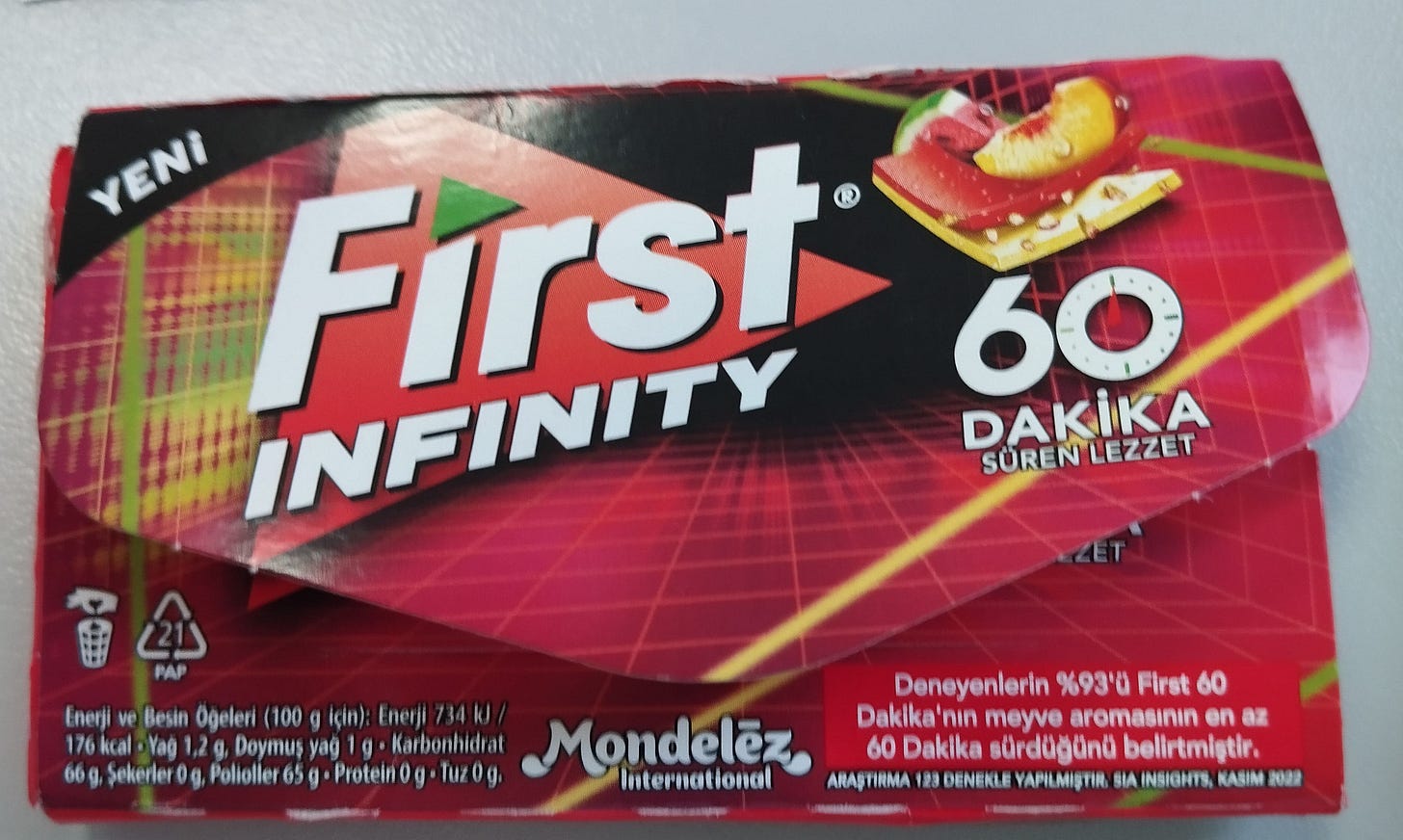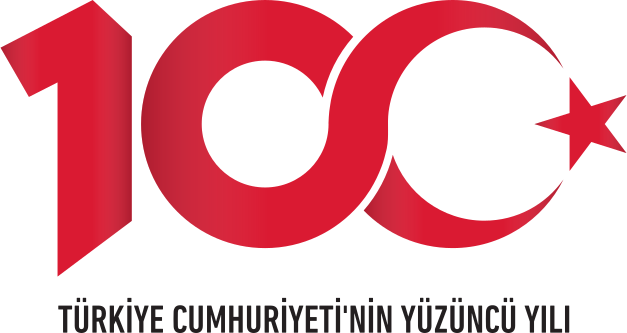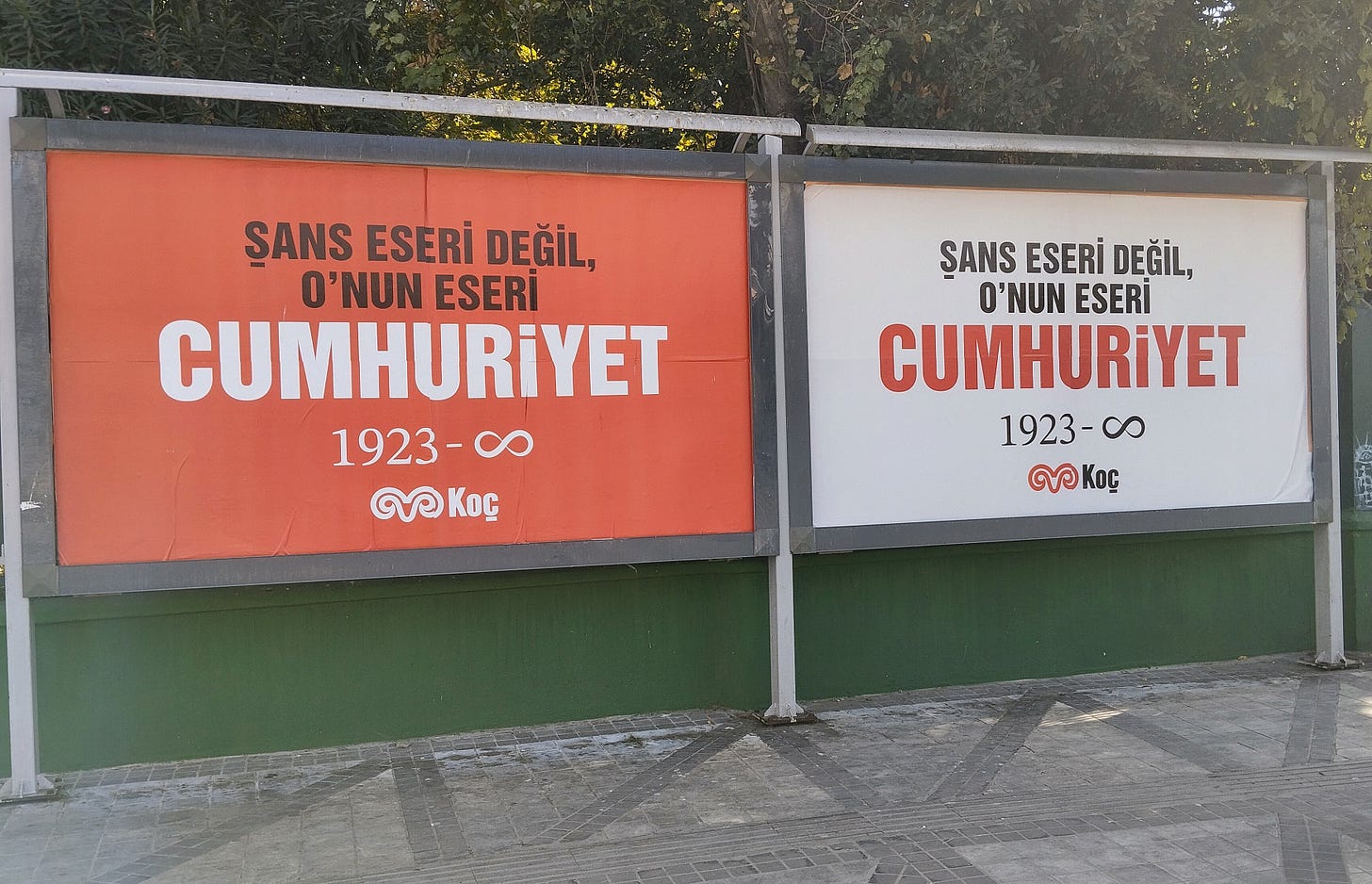On Turks and the Infinity Sign
A motif of life in Turkey is the infinity sign. What's behind its widespread use?
I moved to Turkey in time to celebrate some significant anniversaries.
Just one month after I arrived in August 2022, the city of İzmir celebrated the 100th anniversary of its liberation at the end of the Greco-Turk War (1919-22). İzmir celebrated with one of the largest outdoor concerts ever staged as well as fireworks.
The following year, 2023, marked the centennial anniversary of the Turkish Republic. That was when I noticed it: the infinity symbol — ꝏ — in all the official logos.
As someone with an eye for design, I really liked the concept. It had everything “100” the Turkish crescent & star, red & white, AND ꝏ. One to infinity implies a deep love for the Turkish Republic, a patriotic aspiration, one might say.
But I also saw the logo as ironic. Nowhere else in the world can you witness more fallen empires than in Turkey. Hittite, Trojan, Persian, Macedonian-Seleucid, Roman, Eastern Roman/Byzantine, Seljuk and Ottoman. They have all held Anatolia in the past four millenia. None of them made it to ꝏ — although the Ottomans, predecessors of the Turkish Republic, lasted a good 500 years.
I had assumed that the ꝏ symbol was merely a part of the centennial celebration. Six weeks ago, on October 29, the Turkish Republic turned 101. This was a sign celebrating the holiday.
ꝏ and beyond
The symbol went beyond a logo for me a few weeks ago, when I opened a new pack of gum.
Right next to the assurance that the taste lasts 60 minutes (a claim that holds up, I’ve found) was the brand name in English, “First Infinity”!
I would never expect a piece of gum to offer anything close to an infinite experience, but there it was. A closer look shows the subtle closeness of the 6 and the 0 reinforcing this idea of ꝏ stated directly on the pack.

Now I’m seeing ꝏ everywhere. A visit to a bar last weekend revealed this illustration outside the toilets.
I’ve heard of 100% effort, but 1-ꝏ-%? Just wait until football coaches get ahold of that concept. That sound I’m hearing is math teachers’ brains exploding. Or is ꝏ more a philosophical concept than mathematical or astronomical?
Just one more exemplar. During the Commemoration Day festivities recently, the ꝏ symbol was everywhere. Indeed, Mustafa Kemal Ataturk had died in 1938 at the age of 57. Once again, the poster-designers had taken the 8 from the year of his death, turned it sideways and — şuna bak — the ꝏ symbol was back.

The caption, “We will never forget you,” matched the meaning of the symbol.
What links all these symbols, to me, is aspiration. The future is uncertain in Turkey, with wars raging to the south of its border and north of the border as well, along with internal economic challenges and deep political divisions.
You know, given that context, ꝏ may make more sense — and offer more hope.
Is this just a Turkish thing? Or is the ꝏ symbol in more common use in your country, too? Let me know in the comments.





